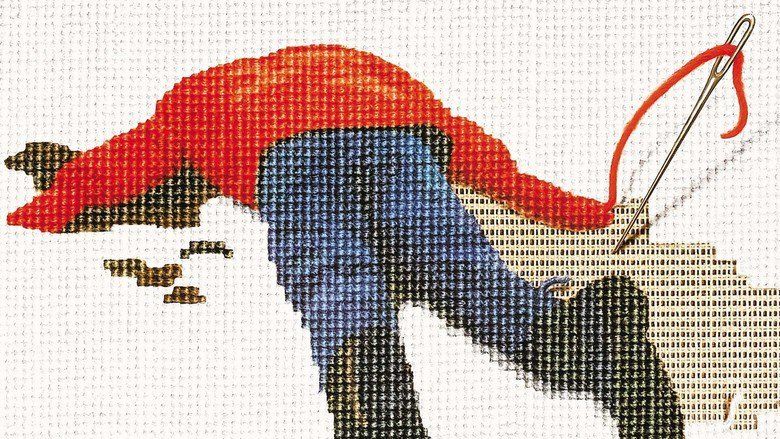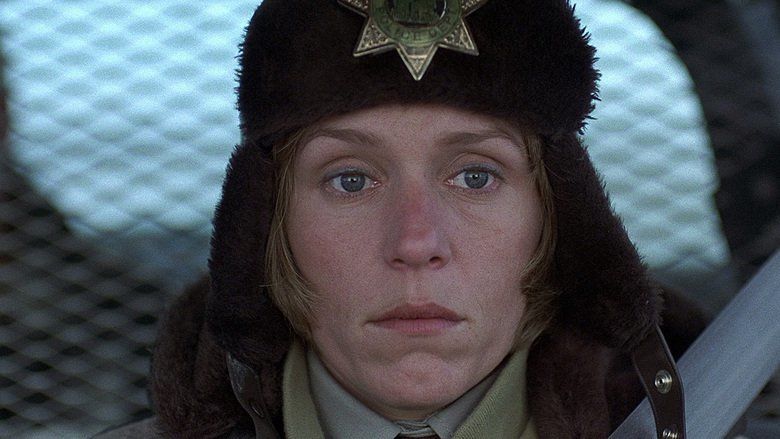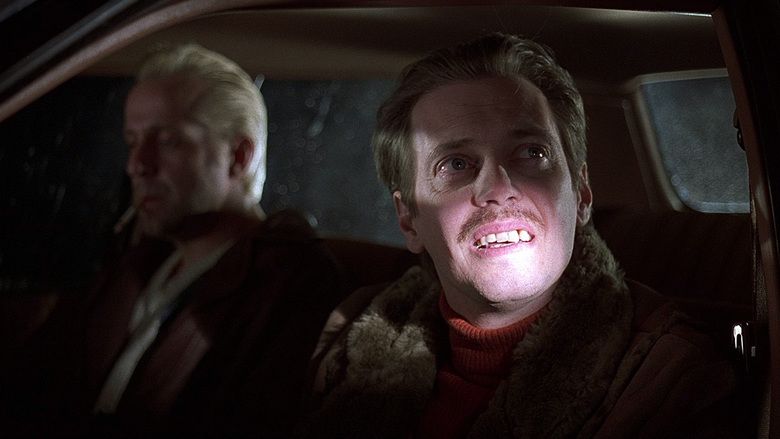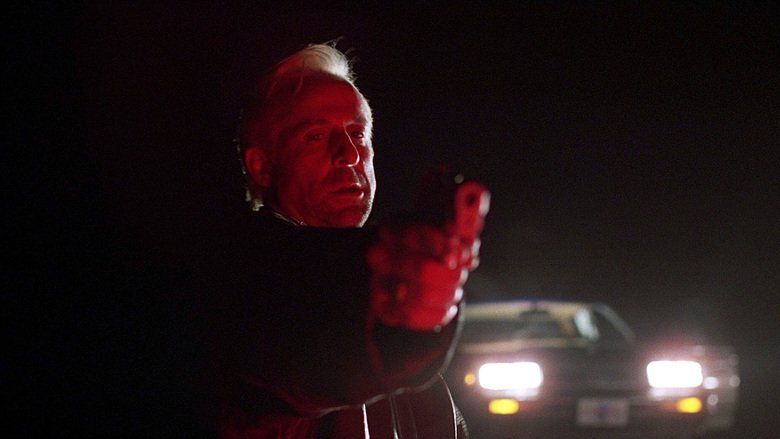Fargo (film)
9 /10 1 Votes
4/4 Roger Ebert 85% Metacritic Genre Crime, Drama, Thriller Duration Language English | 8.2/10 IMDb 94% Rotten Tomatoes Director Joel Coen, Ethan Coen Adaptations Fargo (2014) Country United States | |||||||||||||||||||||||||||||||||
 | ||||||||||||||||||||||||||||||||||
Release date March 8, 1996 (1996-03-08) Writer Ethan Coen, Joel Coen Awards Academy Award for Best Actress Cast William H. Macy (Jerry Lundegaard), Frances McDormand (Marge Gunderson), Steve Buscemi (Carl Showalter), Peter Stormare (Gaear Grimsrud), Kristin Rudrüd (Jean Lundegaard), Harve Presnell (Wade Gustafson)Similar movies Salt , I Spit on Your Grave III: Vengeance is Mine , John Wick , Taken 3 , Knock Knock , Halloween Tagline A lot can happen in the middle of nowhere. | ||||||||||||||||||||||||||||||||||
Fargo official trailer 1 steve buscemi movie 1996 hd
Fargo is a 1996 American black comedy crime film written, produced, edited, and directed by Joel and Ethan Coen. Frances McDormand stars as a pregnant Minnesota police chief investigating roadside homicides that ensue after a desperate car salesman (William H. Macy) hires two criminals (Steve Buscemi and Peter Stormare) to kidnap his wife in order to extort a hefty ransom from his wealthy father-in-law (Harve Presnell).
Contents
- Fargo official trailer 1 steve buscemi movie 1996 hd
- Fargo official trailer 2 steve buscemi movie 1996 hd
- Plot
- Factual vs fictional
- Locations
- Accent
- Critical response
- Film festivals
- Wins
- Nominations
- Soundtrack
- Home video releases
- Television series
- References

Fargo premiered at the 1996 Cannes Film Festival, where Joel Coen won the festival's Prix de la mise en scène (Best Director Award) and the film was nominated for the Palme d'Or. A critical and commercial success, Fargo received seven Academy Award nominations, including Best Picture. McDormand received the Best Actress Oscar, and the Coens won in the Best Original Screenplay category.

The film was selected in 2006 for preservation in the United States National Film Registry by the Library of Congress as "culturally, historically, or aesthetically significant"—one of only six films so designated in its first year of eligibility. The American Film Institute named it one of the 100 greatest American movies of all time in 1998. A Coen-produced FX television series of the same name, inspired by Fargo and taking place in the same universe, started in 2014 and was critically acclaimed.

Fargo official trailer 2 steve buscemi movie 1996 hd
Plot

In the winter of 1987, Jerry Lundegaard, the sales manager at an Oldsmobile dealership in Minneapolis, is desperate for money. He floated a $320,000 GMAC loan and collateralized it with nonexistent dealership vehicles and is unable to pay back the loan. On the advice of dealership mechanic and paroled ex-convict Shep Proudfoot, Jerry travels to Fargo, North Dakota and hires small-time cons Gaear Grimsrud and Carl Showalter to kidnap his wife, Jean, and extort a ransom from his wealthy father-in-law and boss, Wade Gustafson, in return for a new car and half of the $80,000 ransom.

Jerry pitches Gustafson a lucrative real estate deal, and he agrees to front $750,000. Jerry considers calling off the kidnapping, but learns that Gustafson plans to make the deal himself, giving Jerry a finder's fee. At Jerry's home, Carl and Gaear carry out the kidnapping. As they transport Jean to their remote cabin on Moose Lake, a state trooper pulls them over outside Brainerd for driving without temporary tags. When the trooper hears a sound from the back seat, Gaear kills him, then chases down two eyewitnesses and shoots them.

The following morning, Brainerd police chief Marge Gunderson discovers that the dead trooper was ticketing a car with dealership plates. Later, two men driving a dealership vehicle checked into the nearby Blue Ox Motel with two call girls, then placed a call to Proudfoot. After questioning the prostitutes, she drives to Gustafson's dealership, where Proudfoot feigns ignorance and Jerry insists no cars are missing. While in Minneapolis, Marge reconnects with Mike Yanagita, an old classmate. Mike awkwardly and aggressively tries to romance Marge, before breaking down, saying his wife has died.

Jerry informs Gustafson that the kidnappers have demanded $1 million, and will deal only through him. Meanwhile, Carl, in light of the complication of three murders, demands that Jerry hand over the entire $80,000. GMAC gives Jerry 24 hours to prove the existence of the vehicles or return the loan.

Carl is beaten by a furious Proudfoot for bringing him under suspicion. Carl orders Jerry to deliver the ransom immediately. Gustafson insists on making the money drop himself. At the drop point in a Minneapolis parking garage, he tells Carl he will not hand over the money without seeing Jean. An enraged Carl shoots and kills Gustafson. After fleeing the scene, Carl is astounded to discover that the briefcase contains $1 million. He removes $80,000 to split with Gaear, then buries the rest alongside the highway. At the cabin, Gaear has killed Jean; Carl says they must split up and leave the state immediately; but after a heated argument over who will keep the dealership car, Gaear kills Carl.
Marge learns that Yanagita's dead wife is neither dead nor his wife. Reflecting on Yanagita's convincing lies, Marge returns to Gustafson's dealership. Jerry continues to insist that he is not missing any cars. Marge asks him to inventory the lot, then spots him fleeing the dealership, and calls the State Police. The next morning, she drives to Moose Lake on a tip from a local bar owner who reported a "funny-looking guy" bragging about killing someone. Outside a cabin, she finds the dealership car; nearby, Gaear is feeding Carl's dismembered body into a woodchipper. Marge shoots him in the leg as he tries to flee, and arrests him. North Dakota police arrest Jerry at a motel outside Bismarck.
Marge's husband Norm, whose mallard painting has been selected for a 3-cent postage stamp, complains that his friend's painting will be on the first class stamp. Marge reassures Norm that lots of people use 3-cent stamps; the two happily anticipate the birth of their child in two months.
Factual vs. fictional
Multiple accounts exist regarding the factual (or fictional) basis for Fargo. The film opens with the following text:
This is a true story. The events depicted in this film took place in Minnesota in 1987. At the request of the survivors, the names have been changed. Out of respect for the dead, the rest has been told exactly as it occurred.
Closing credits, however, bear the standard "all persons fictitious" disclaimer for a work of fiction.
To resolve this apparent discrepancy, the Coen brothers explained that they based their script on an actual criminal event, but wrote a fictional story around it. "We weren't interested in that kind of fidelity," Joel Coen said. "The basic events are the same as in the real case, but the characterizations are fully imagined ... If an audience believes that something's based on a real event, it gives you permission to do things they might otherwise not accept."
The brothers have modified their explanation more than once. In 1996, Joel Coen told a reporter that—contrary to the opening graphic—the actual murders were not committed in Minnesota. Many Minnesotans speculated that the story was inspired by T. Eugene Thompson, a St. Paul attorney who was convicted of hiring a man to murder his wife in 1963, near the Coens' hometown of St. Louis Park; but the Coens claimed that they had never heard of Thompson. After Thompson's death in 2015, Joel Coen changed the explanation again: “[The story was] completely made up. Or, as we like to say, the only thing true about it is that it’s a story.”
The film's special edition DVD contains yet another account, that the film was inspired by the infamous 1986 murder of Helle Crafts from Connecticut at the hands of her husband, Richard, who disposed of her body through a wood chipper.
Locations
Fargo was filmed during the winter of 1995, mainly in the Minneapolis-St. Paul area and around the actual town of Brainerd (which was the film's original title). Due to unusually low snowfall totals in central and southern Minnesota that winter, scenes requiring snow-covered landscapes had to be shot in northern Minnesota and eastern North Dakota (though not in Fargo itself).
Jerry's initial meeting with Carl and Gaear was shot at a pool hall and bar called The King of Clubs in the northeast section of Minneapolis. It was later demolished, along with most other buildings on that block of Central Avenue, and replaced by low-income housing. Gustafson's auto dealership was actually Wally McCarthy Oldsmobile in Richfield, a southern suburb of Minneapolis. The site is now occupied by Best Buy's national corporate headquarters. The "Welcome to Brainerd" Paul Bunyan statue was built for the film in the northeast corner of North Dakota, near the Canadian border. (Though several present-day Paul Bunyan statues in Minnesota and North Dakota claim to be associated with Fargo, the one actually used in the movie was dismantled after filming was completed.) The Blue Ox motel/truckstop was Stockmen's Truck Stop in South St. Paul, which is still in business. Ember's, the restaurant where Carl discussed the ransom drop with Gustafson, was located in St. Louis Park, the Coens' hometown; the building now houses a medical outpatient treatment center.
The Lakeside Club, where Marge interviewed the hookers, was a family restaurant—now closed—in Mahtomedi, Minnesota. The kidnappers' Moose Lake hideout actually stood on the shore of Square Lake, near May, Minnesota. The cabin was relocated to Barnes, Wisconsin in 2002. The Edina police station where the interior police headquarters scenes were filmed is still in operation, but has been completely rebuilt. The Carlton Celebrity Room was an actual venue in Bloomington, Minnesota, and José Feliciano did once appear there, but it had been closed for almost ten years when filming began. The Feliciano scene was shot at the Chanhassen Dinner Theatre in Chanhassen, near Minneapolis. The ransom drop was filmed in two adjacent parking garages on South 8th Street in downtown Minneapolis. Scenes in the Lundegaards' kitchen were shot in a private home on Pillsbury Avenue in Minneapolis, and the house where Mr. Mohra described the "funny looking little guy" to police is in Hallock, in northwest Minnesota. The motel “outside of Bismarck”, where the police finally catch up with Jerry, is the Hitching Post Motel in Forest Lake, north of Minneapolis.
While none of Fargo was actually filmed in Fargo, the Fargo-Moorhead Convention & Visitors Bureau exhibits original script copies and several props used in the film, including the wood chipper. After the movie's release, by some accounts, Brainerd was invaded by shovel-toting moviegoers searching for the buried ransom cash, inspired by the dubious "based-on-a-true-story" announcement in the opening credits.
Accent
The film's illustrations of "Minnesota nice" and distinctive regional accents and expressions made a lasting impression on audiences; years later, locals reported continuing to field tourist requests to say "Yah, you betcha", and other tag lines from the movie. Dialect coach Liz Himelstein maintained that "the accent was another character". She coached the cast using audio tapes and field trips. Another dialect coach, Larissa Kokernot (who also played one of the prostitutes), noted that the "small-town, Minnesota accent is close to the sound of the Nords and the Swedes," which is "where the musicality comes from". She taught McDormand "Minnesota nice" and the characteristic head-nodding to show agreement. The strong accent spoken by Macy's and McDormand's characters, which was exaggerated for effect, is less common in the Twin Cities, where over 60% of the state's population lives. The Minneapolis and St. Paul dialect is characterized by the Northern cities vowel shift, which is also found in other places in the Northern United States as far east as Rochester, New York.
Critical response
Fargo holds a 94% approval rating and 8.7/10 average on Rotten Tomatoes based on 87 reviews. The site's critical consensus reads, "Violent, quirky, and darkly funny, Fargo delivers an original crime story and a wonderful performance by McDormand". The film scores 85 out of 100 on Metacritic, based on 24 reviews, indicating "universal acclaim".
Gene Siskel and Roger Ebert each named Fargo the best film of 1996. Ebert called it "one of the best films I've ever seen", adding that "films like Fargo are why I love the movies". He later ranked it fourth on his list of the best films of the 1990s.
Fargo was ranked 84th on the American Film Institute's "100 Years...100 Movies" list in 1998 (although it was removed from the 2007 version) and 93rd on "AFI's 100 Years...100 Laughs" list. The Marge Gunderson character was ranked 33rd on AFI's 100 Years...100 Heroes & Villains.
In 2010, the Independent Film & Television Alliance selected the film as one of its "30 Most Significant Independent Films" of the last 30 years.
Film festivals
Fargo premiered at the 1996 Cannes Film Festival, where it was nominated for the competition's highest honor, the Palme d'Or. Joel Coen won the top directorial award, the prix de la mise en scène. Subsequent notable screenings included the Pusan International Film Festival in South Korea, the Karlovy Vary International Film Festival in the Czech Republic, and the Naples Film Festival.
In 2006, the sixth annual Fargo Film Festival marked Fargo's tenth anniversary by projecting the movie on a gigantic screen mounted on the north side of Fargo's tallest building, the Radisson Hotel.
Wins
Nominations
Soundtrack
As with all the Coen Brothers' films, except O Brother, Where Art Thou?, the score to Fargo is by Carter Burwell.
The main musical motif is based on a Norwegian folk song called "The Lost Sheep", or natively "Den bortkomne sauen".
Other songs featured in the film include: "Big City" by Merle Haggard, heard in the King of Clubs while Jerry meets with Carl and Gaear, "These Boots Are Made for Walkin'" by Boy George plays in the garage as Shep works, and "Let's Find Each Other Tonight" a live nightclub performance by José Feliciano that is viewed by Carl and a female escort. In the diner, when Jerry is urging Wade not to get police involved in his wife's kidnapping, Chuck Mangione's "Feels So Good" can be heard faintly in the background. An instrumental version of "Do You Know the Way to San Jose" plays during the scene where Marge and Norm are eating at a buffet. The restaurant scene with Mike Yanagita is accompanied by a piano arrangement of "Sometimes in Winter" by Blood, Sweat & Tears. All the songs heard in the film are featured only as background music, usually on a radio, and do not appear on the soundtrack album.
The soundtrack was released in 1996 on TVT Records, combined with selections from the score to Barton Fink.
Home video releases
Television series
In 1997, a pilot was filmed for an intended television series based on the film. Set in Brainerd shortly after the events of the film, it starred Edie Falco as Marge Gunderson and Bruce Bohne reprising his role as Officer Lou. It was directed by Kathy Bates and featured no involvement from the Coen brothers. The episode aired in 2003 during Trio's Brilliant But Cancelled series of failed TV shows.
A follow-up TV series inspired by the film, with the Coens as executive producers, debuted on FX in April 2014. The first season received acclaim from both critics and audiences. Existing in the same fictional continuity as the film, each season features a different story, cast, and decade-setting. In season one, the episode "Eating the Blame" reintroduces the buried ransom money for a minor three-episode subplot. The series continues to be a success, and has had two additional seasons made thus far.
References
Fargo (film) WikipediaFargo (film) IMDbFargo (film) Roger EbertFargo (film) Rotten TomatoesFargo (film) MetacriticFargo (film) themoviedb.org
